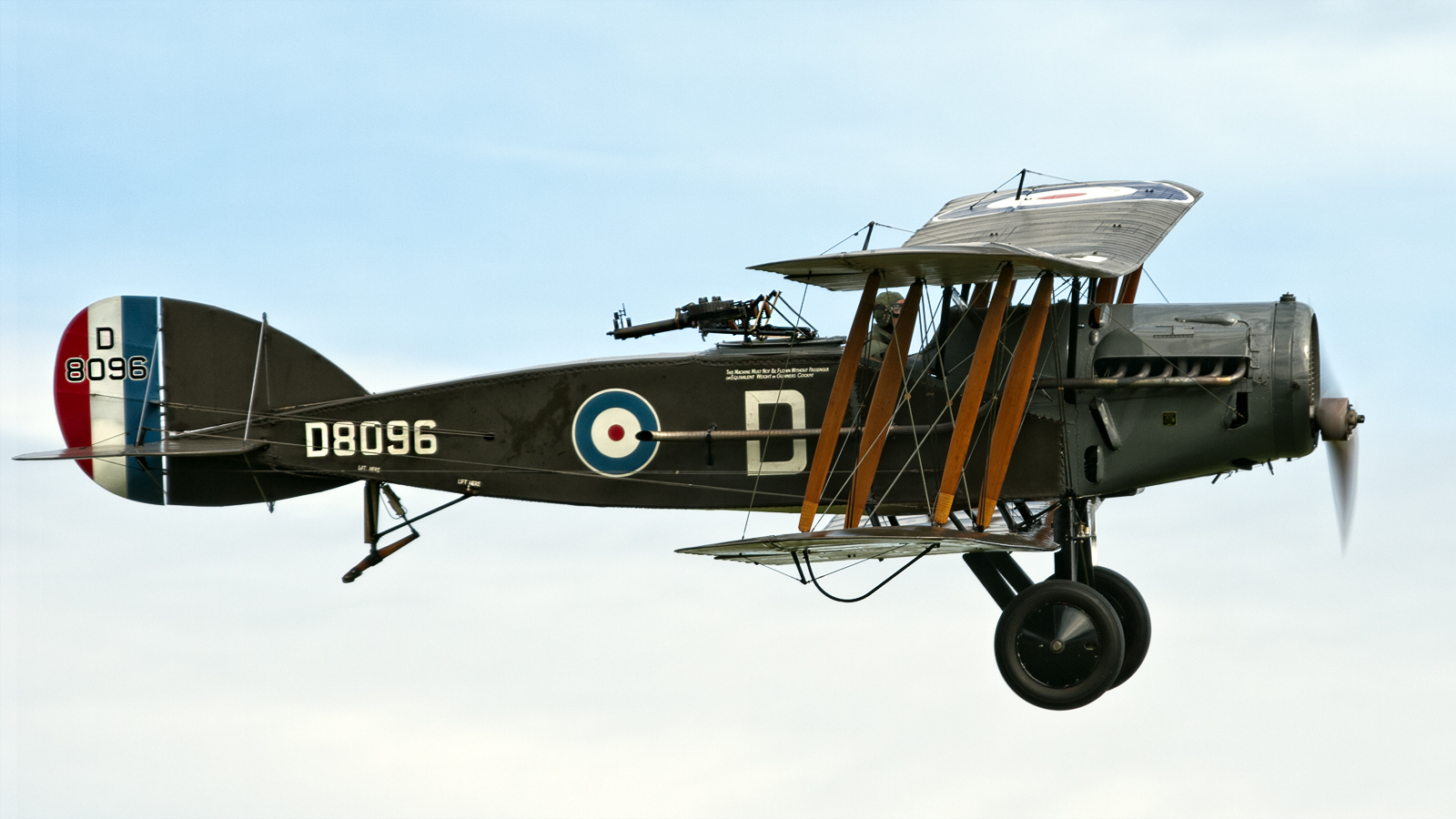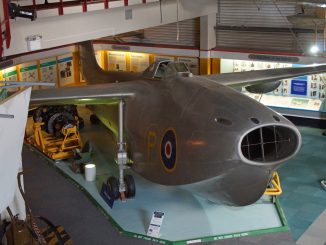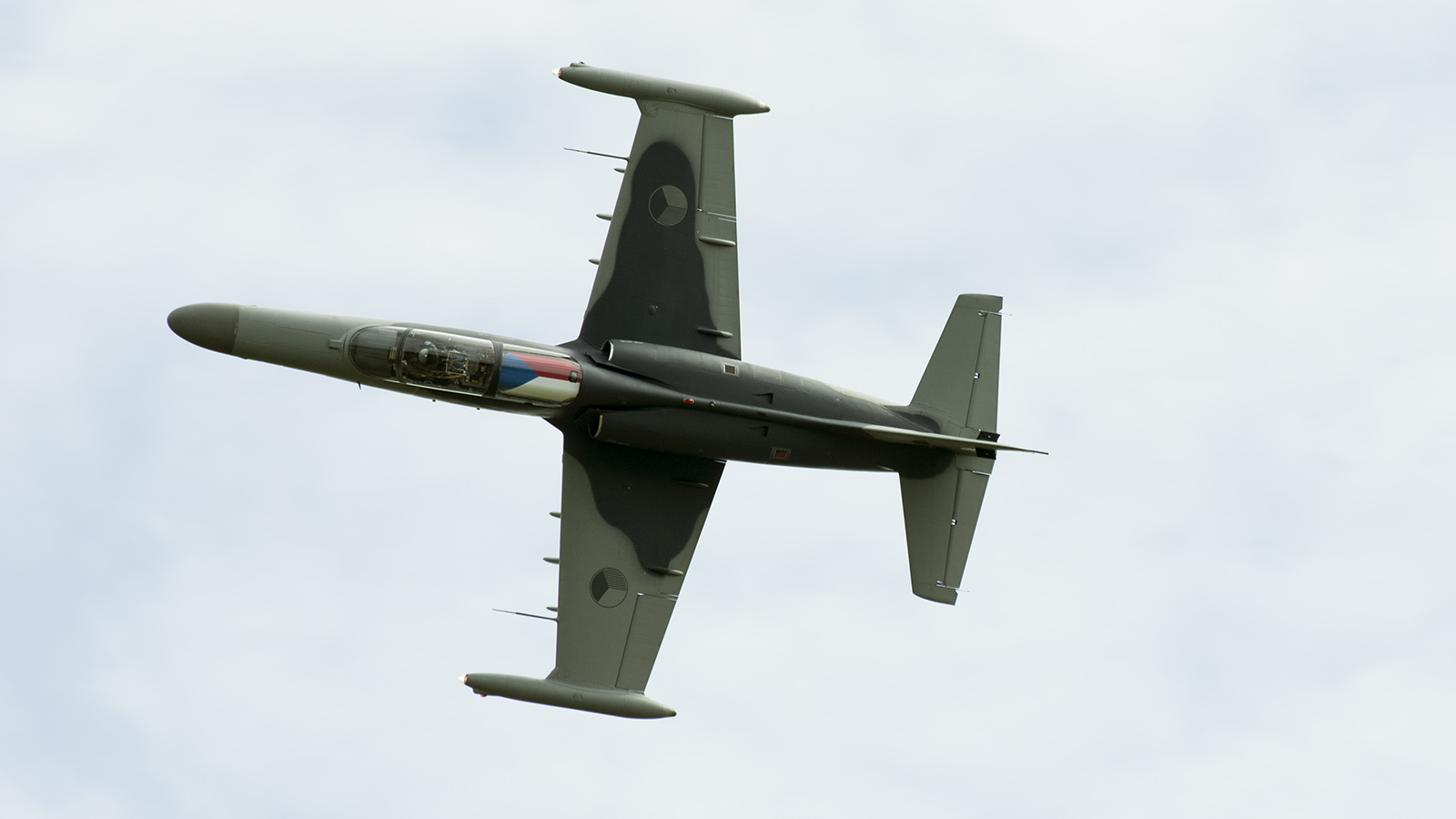
First prototype Bristol F.2A flew 9 September 1916, equipped with a Rolls Royce Mk.1 engine. Only 52 F.2As were produced before production switched to what became the definitive Bristol Fighter, the Bristol Type 14 F.2B which had first flown on 25 October 1916. The aircraft saw action in many foreign countries and was used by the British in their overseas operations. The production F2B featured a reduced chord tail plane with longer span elevators. These were later changed to use the elevators of the F2A with the tail plane of the F2B and this arrangement was retained for all wartime F2Bs.
Developing nation: United Kingdom.
Manufacturer/designer: Bristol Aeroplane Company/ Frank Barnwell
Production line: Filton, England, UK.
Type aircraft: Fighter/Reconnaissance.
First flight: 9 September 1916.
Produced: 1916-1927.
Built: 5,329
Initially conceived in early 1916 as the Bristol R.2a reconnaissance aircraft to replace the Royal Flying Corps (RFC) aging BE2 series, Frank Barnwell’s design evolved into the Bristol Fighter in July 1916 following the incorporation of the brand new Rolls Royce 190hp ‘Falcon’ engine. An order was placed for 50 aircraft and the first production Bristol F.2a Fighter (A3303) made the types maiden flight on 9 September 1916.
Deliveries of this new aircraft to 48 Squadron RFC started in December 1916 and continued through to March 1917 at which time they flew their 18 new Bristol F.2a Fighters to France. Their operational debut on 5 April 1917 was somewhat less than successful. Despite having the Bristol Fighter on strength for 3 months 48 Sqn thought it to be structurally unsound and, despite its name, flew them in a rather sedately manner similar to two seat reconnaissance aircraft, slow and steady as a platform for the rear gunner.
The most successful Bristol ace who flew F.2B`s as a pilot, Andrew Edward McKeever from No.11 squadron, scored an impressive 31 kills flying Bristols. However, his record was overshadowed by that of the highest scoring observer ace of the war, Charles George Gass, who scored 39 kills while flying as a Bristol gunner!
Several different engine types, including 150-200hp Hispano Suiza and Sunbeam’s 200hp Arab, were fitted to the Biff (as it became affectionately known by those who flew it) but by far the most common and successful were the 190-275hp V12 Rolls Royce ‘Falcon’. The Bristol Fighter continued to serve long after the war with many different air forces and was not finally withdrawn from Commonwealth service until it was retired by the RNZAF in 1936.
Operators
Afghanistan – Afghan Air Force operated three aircraft from 1919 and retired by 1929.
Argentina
Australia – Australian Flying Corpsoperated the Bristol Fighter from 1917 to 1918.
Belgium – Belgian Air Force
Bolivia – Bolivian Air Force
Canada – Canadian Air Board and Royal Canadian Air Force
Honduras – Honduran Air Force
Ireland – Irish Air Service/Irish Air Corps
Greece – Hellenic Air Force, Hellenic Navy
Mexico – Mexican Air Force
New Zealand – New Zealand Permanent Air Force
Norway – Norwegian Army Air Service
Peru – Peruvian Air Force
Poland – Polish Air Force operated 107 Bristol F.2B Fighter in 1920-1932.
Kingdom of Spain – Spanish Air Force
Sweden – Royal Swedish Air Force
Kingdom of Yugoslavia – Royal Yugoslav Air Force – One aircraft only.
United Kingdom – Royal Flying Corps / Royal Air Force
Specifications (F.2b)
General characteristics
- Crew: 2 (pilot & observer/gunner)
- Length: 7.87 m (25 ft 10 in)
- Wingspan: 11.96 m (39 ft 3 in)
- Height: 2.97 m (9 ft 9 in)
- Wing area: 37.62 m² (405 ft²)
- Empty weight: 975 kg (2,145 lb)
- Max takeoff weight: 1,474 kg (3,243 lb)
- Powerplant: 1 × Rolls-Royce Falcon III liquid-cooled V12 engine, 275 hp (205 kW)
Performance
- Maximum speed: 198 km/h (123 mph, 107 kn) at 1,500 m (5,000 ft)
- Range: 593 km (369 mi, 320 nmi)
- Service ceiling: 5,500 m (18,000 ft)
- Rate of climb: 4.5 m/s (889 ft/min)
Armament
- Guns:
- 1× 7.7 mm (.303 in) forward-firing Vickers machine gun in the upper fuselage
- 1 or 2× 7.7 mm (.303 in) in Lewis Guns in the observer’s cockpit
- Bombs: 110 kg (240 lb)
All pictures courtesy of Zijde Aviation Photo and Publishing, Rob Vogelaar







